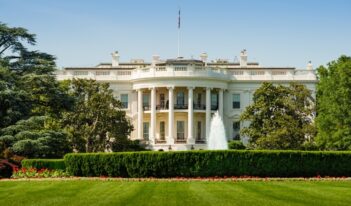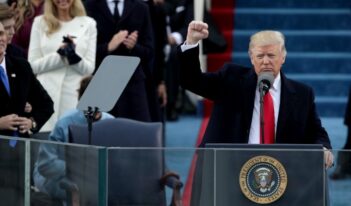
Scholar argues that only Congress has the power to modify a National Monument.
When President Bill Clinton created the Grand Staircase-Escalante National Monument in 1996, and President Barack Obama created Bears Ears National Monument in 2016, both designations sparked controversy. This controversy largely arose from the size of the designations—the Grand Staircase encompassing 1.7 million acres and Bears Ears encompassing 1.35 million acres—as well as a lack of state involvement in planning. Responding to this controversy, President Donald J. Trump reduced the size of both Grand Staircase and Bears Ears by about 85 percent.
But in his recent article, professor John Ruple argues that the President does not have the authority to reduce a national monument after it is created without congressional approval.
National monuments are created at the President’s discretion under the authority of the Antiquities Act of 1906. National parks, on the other hand, can only be created by Congress. Over 120 national monuments have been created since 1906. Some of the most famous national parks in the United States, such as Grand Canyon National Park and Olympic National Park, began as national monuments before Congress designated them as national parks.
The Antiquities Act grants the President discretionary authority to declare lands of “historic or scientific interest” as national monuments as long as those lands are owned by the federal government. The Act restricts the limits of a national monument to the “smallest area compatible with the proper care and management of the objects to be protected.” President Trump relied on that language as a justification for modifying both Bears Ears and Grand Staircase.
Ruple, however, argues that Congress never granted the President authority to reduce a monument’s size. Neither the Act itself nor any legislative hearings leading to the Act’s passage mention altering a monument once created, he says.
The Trump Administration asserts that, along with an explicit grant of authority to create a monument, Congress also gave the President implicit authority to reduce or eliminate a monument. Yet Ruple points to the Federal Land Policy and Management Act, which denied the Secretary of the Interior the power to modify or withdraw national monuments. Even though the Act never mentioned the President’s authority, Ruple contends that this is evidence that Congress intended to reserve the power to modify national monuments.
But the reductions of both Bears Ears and Grand Staircase are not the first national monument modifications in U.S. history. In fact, seven Presidents have modified national monuments in the past. Even though Congress did not act after those prior monument modifications, Ruple asserts that any argument for past congressional approval of the President’s power to reduce cannot be applied to the reduction of Bears Ears and Grand Staircase. Those reductions occurred only under special circumstances that do not apply to President Trump’s actions, he contends.
First, Ruple emphasizes that every national monument that has been modified in the past was created before 1940. Antiquated survey techniques and limited technology made surveying the American West difficult for much of U.S. history, and Ruple points to survey errors as the main reason for various national monument alterations. Ruple argues that unlike older monuments, Bears Ears and Grand Staircase were created in an age of satellite surveying and detailed mapping and cannot be compared to past modifications.
Second, Ruple highlights instances when sites were modified because of new information obtained about a specific monument after investigation and review. Three previous modifications resulted from new information about the region either due to poor surveying or changing conditions, such as the deterioration of the culturally valuable items the monument was meant to protect. Unlike those instances, Ruple argues, the Trump Administration’s did not base its modifications on new information.
Finally, various monuments were modified due to national security threats related to the two World Wars. Ruple argues that this type of modification in the past has been based on the President’s Article II powers rather than on any congressional grant related to the Antiquities Act. Unlike President Woodrow Wilson’s reduction of Mount Olympus National Monument, later to become Olympic National Park, to increase timber supply for the war effort, the Trump Administration reductions, Ruple contests, have not been justified on any national security grounds.
Ruple argues that since no past revision is comparable to the Trump Administration’s actions, the President cannot rely on past congressional silence as a justification for reducing Bears Ears or Grand Staircase.
Other scholars, such as Jonathan Wood of the Pacific Legal Foundation, contend that an argument like Ruple’s is too formalistic and would have drastic implications for the administrative state. Wood argues that a President commonly amends orders and rules put in place by a predecessor. Not allowing this, Wood argues, would make any one President too powerful.



